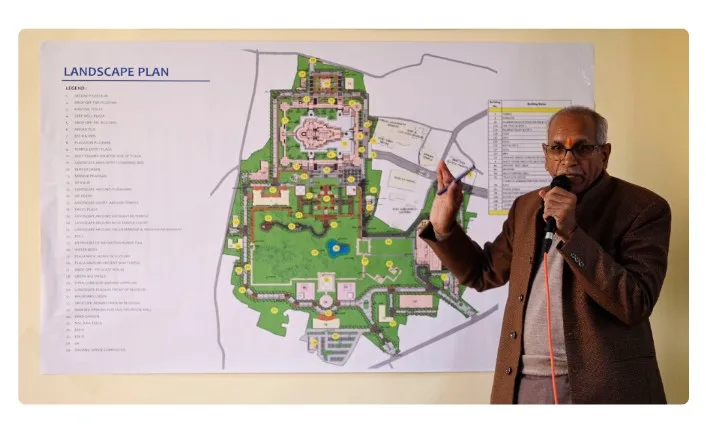With the inauguration of the Ram Temple just a month away on January 22, the Ram Temple Trust unveiled the landscape map of the expansive 70-acre complex, showcasing a meticulous design focused on self-sustainability. The temple, adhering to the principles of ‘Aatmanribhar,’ incorporates sewer plants, water treatment facilities, a fire brigade post, and a dedicated power line to ensure it doesn’t burden the Ayodhya municipality.
Key Features of the Ram Temple Complex:
1. Entry and Exit: Visitors will enter from the east side and exit from the south side, while the entire temple superstructure will eventually stand three stories tall.
2. Architectural Style:Following the traditional Nagara style, the temple complex will be 250 feet wide and 161 feet high, with each floor being 20 feet high. It will feature 392 pillars and 44 gates.
3. Percota Addition: A unique feature is the 14-foot wide percota around the grand temple, spanning an impressive 732 meters. This outer structure is unusual for North Indian temples.
4. Deities and Shrines: The four corners of the percota will be dedicated to Sun God, Maa Bhagwati, Lord Ganesha, and Lord Shiva. The complex will also host shrines for various revered figures including Maharshi Valmiki, Maa Annapurna, and Lord Hanuman.
5. Pilgrim Facilitation: The complex includes a pilgrim facilitation center with a healthcare facility and a toilet block. Additionally, a provision allows 25,000 people to deposit their belongings before darshan.
6. Green Spaces: Approximately 70% of the 70-acre complex will be dedicated to green areas, featuring trees over a hundred years old and a dense jungle that shields the ground from direct sunlight.
7. Infrastructure: The complex boasts two sewerage treatment plants, a water treatment plant, and a dedicated electricity line. It includes a fire brigade post with water sourced from an underground reservoir, ensuring the groundwater level remains unaffected.
The Ayodhya Trust’s General Secretary, Champat Rai, emphasized that the temple complex’s construction aligns with the principles of self-sufficiency and environmental responsibility, ensuring a grand and sustainable legacy.







